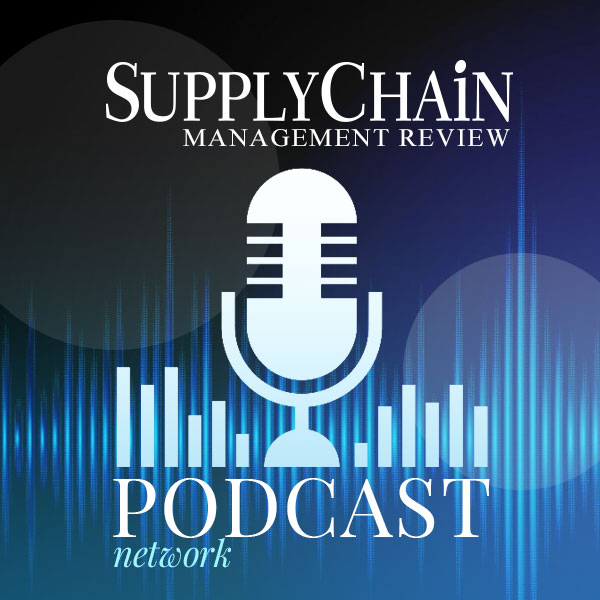Editor's note: Each month, Supply Chain Management Review covers a supply chain education topic in The Academy, which appears exclusively on scmr.com on the third Wednesday of each month. If you are interested in future topics, you can see a full list of upcoming topics on our Editorial Calendar.
There are two forces hard at work in the supply chain today: there is not enough talent, and the talent is not educated enough for a technologically advanced world.
Reconciling the two will go a long way to solve many other problems.

“Companies' supply chain futures depend on leadership protecting and executing against the talent priorities in today's supply chain strategy and roadmap,” wrote Dana Stiffler, distinguished vice president analyst for Gartner Supply Chain, in a 2022 Supply Chain Management article on how to retain frontline talent.
Plenty of educational options available
Fortunately, organizations have resources available to them that just a few short years ago didn't exist, or existed only in limited fashion. Those are hybrid and online learning modules.
“In-person training was pretty much the way for people to access their training options,” explains Lisa Sallstrom, Association for Supply Chain Management executive vice president of products and services, tells Supply Chain Management Review.
While online and hybrid existed prior to the COVID-19 pandemic, Sallstrom says it really took off during that time. The upside is that whether training is conducted in person, online, or in a hybrid environment, supply chain organizations have the tools at their fingertips to empower employees, adapt to changing technology, and fight against turnover.
And the big winners may be the employees themselves. ASCM's 2023 report, “The Supply Chain Profession in 2023: Salaries and Careers Across the Globe,” found that the average median supply chain salary is $98,570 (including base and additional compensation), up more than 3% from the previous year's survey. The average median pay in the U.S. in Q4 of 2022 was equivalent to $56,420 annually, according to data from the Bureau of Labor Statistics.
In the U.S., total compensation ranges from $62,962 to $192,000. The median cash bonus for survey respondents was $8,000, with some as high as $40,000. Seventy-one percent of respondents reported receiving some form of additional compensation. That compensation included cash bonuses (55%), profit sharing (13%) incentive pay (10%), overtime pay (8%) or other cash compensation (6%).
Training is for both frontline workers and executives. And it comes from associations like ASCM and the Institute for Supply Management, or from the university environment. The key, according to Sallstrom, is for each to listen to the industry so the trainings being developed are both useful and needed.
“It's listening to the industry, and understanding what the top 10 trends are,” she says of how ASCM approaches education. “We have a really great group of corporate members that present us with their feedback on what their pain points are, and we combine that with hot topics in the industry … and other data points and we put together a list throughout the year of what topics we want to address.”
Sallstrom says that education can offer a business return on investment. “They are seeing having educated, certified staff is contributing much more to their bottom line,” she notes. “On the students' side, they are looking at this as ‘hey, my company is willing to invest in me, so there is a little bit of loyalty here.'”
In-person training
For many organizations, in-person training can't be beat. The traditional approach, Sallstrom says it remains a good option, offering the opportunity for hands-on training, strong networking opportunities, and immediate feedback from instructors.
However, with staffing an issue, some organizations can't afford to send their employees away for training. Inflexible scheduling and cost (travel, hotel, time) are major drawbacks as is geography and limited course availability.
“It's really difficult to gather all those people in one place at one time,” Sallstrom says. “However, that doesn't mean there isn't a place for in person training.”
Sallstrom says in-person also works really well when the training requires intimate and hands-on knowledge of equipment operation—something that can't really be duplicated online.
Online training
Online training exploded during the COVID pandemic, and there continue to be some significant benefits to providing continuing education in this format. Sallstrom cites a lower overall cost, quicker training programs, convenience, scheduling flexibility and the ability to have a larger learning library among those.
On the flip side, participating in online training does limit networking opportunities, can be disrupted with technology issues, and is often self-guided instruction which is not always the best approach for individuals.
It does, though, meet modern employee needs in many cases. “We need to meet them where they are at, and online education gives us the ability to do that,” Sallstrom says.
ASCM's online Supply Chain Knowledge Center has over 100 online classes available to individuals. The classes are updated regularly (3 years for major products, yearly for minor updates), ensuring students are receiving the latest information. There are currently five certificate courses available, requiring about 20 hours of training per certificate. Current ASCM members can access any of the classes for just $99.
Hybrid classes
Hybrid learning has been growing in popularity, in part because it combines the best of all learning models.
Sallstrom says there are two types of hybrid programs—synchronized and asynchronized. The difference is in how the teaching is handled. In synchronized programs, students typically gather as a class in an online forum whereas in asynchronized classes, the instructor typically pre-records a webinar and the student has the flexibility to watch at their leisure ahead of a more formal online class. That class allows for questions and interactions.
In either case, hybrid learning has many of the same advantages of online learning – lower cost, more flexibility, larger learning modules/classes. Unlike strict online learning that is really self-guided, hybrid models do include an instructor who can offer encouragement, answer questions, and generally keep students on track. Hybrid models do have fewer options, though, since instructors are not always available to lead classes.
ASCM partners with Fox Valley Technical College to offer hybrid learning courses.
“[This option] is particularly interesting for those enterprise organizations that have dispersed employees around the world that need to hear the same [message and trainings] so they hear the same instructor at the same time,” Sallstrom says. “This is often the choice for those organizations.”
Whichever option an organization chooses, the advantages of providing continuing education to employees pays dividends down the line for both company and employee.
“The academic world has absolutely exploded when it comes to supply chain and executive education, in part because of the pandemic but also because salaries have been historically high for supply chain professionals,” states Abe Eshkenazi, CEO at the Association for Supply Chain Management (ASCM). “If you have a baccalaureate degree and you're working in supply chain, you're going to out-earn your counterparts in other industries.”
ASCM says individuals who hold at least one credential reported a median salary that is 16% higher than those who don't. And people with two or more certifications earn 34% more.
Sallstrom says ASCM can help tailor education training for organizations to help them close talent gaps.
“Narrow down the type of training you are interested in and what will most value the organization,” she concludes.
SC
MR


More Columns
- When disaster strikes, the supply chain becomes the key to life
- An educated workforce is loyal, but what type of education is best?
- Keys to staying ahead of the competition
- The key to good data management? Start with good data
- Assessing the e-commerce supply chain as sales, imports grow
- Bite-sized nuggets offer real-time learning
- More Columns
Latest Podcast

 Explore
Explore
Topics
Education News
- Do net-zero goals matter?
- Leadership development for supply chain leaders
- ASCM introduces Supplier Relationship Management certificate
- An educated workforce is loyal, but what type of education is best?
- When the scales tilt: Making vaccine access work for all
- Five organizational action areas for developing supply chain talent
- More Education
Latest Education Resources

Subscribe

Supply Chain Management Review delivers the best industry content.

Editors’ Picks




